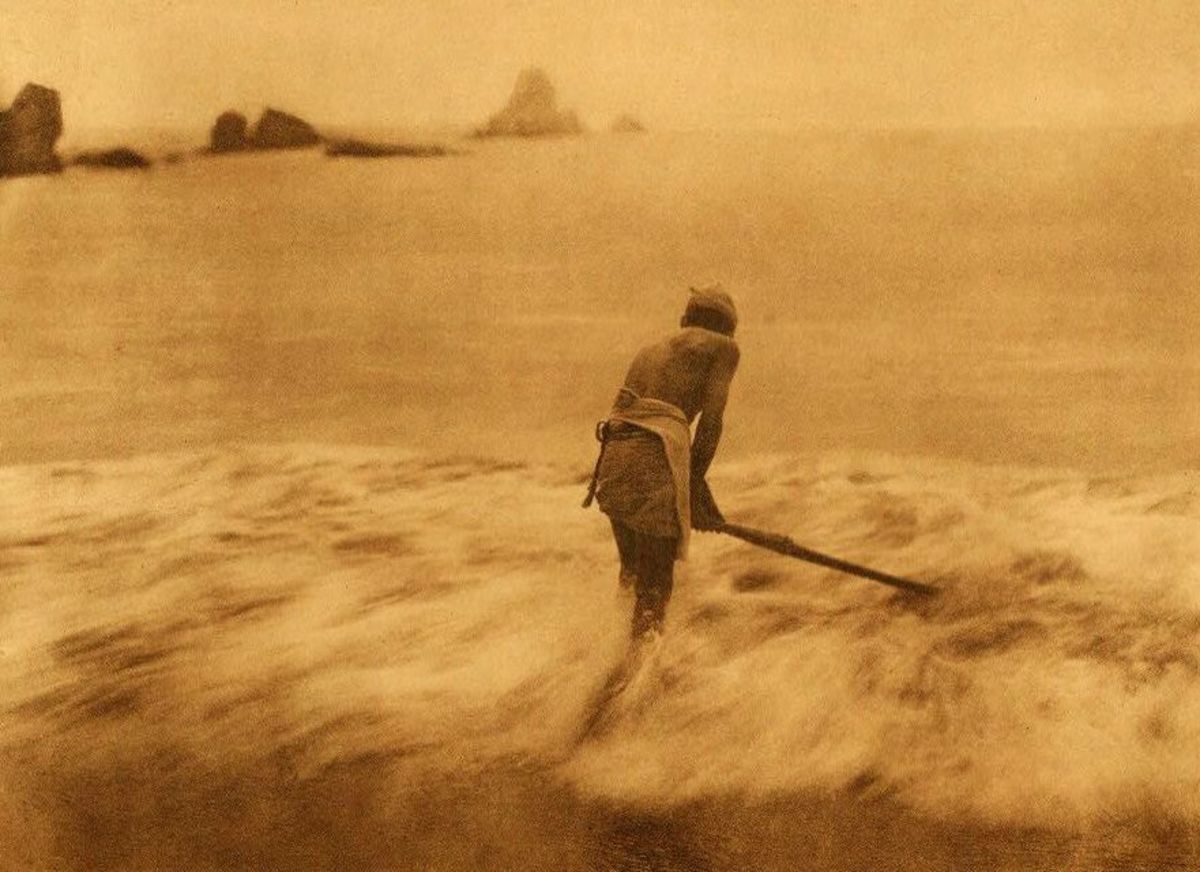The First Americans : Ancient Past
THE FIRST AMERICANS : Ancient Past
INTRODUCTION
Who were the first Americans? Where did they originate from ?Early explorers were greatly impressed by the “similarities” between Egyptian and aboriginal American cultures, such as the great pyramids to be found in Egypt, Mexico and Mississippi Valley, and therefore made a conclusion that the native Americans were descendants of Ham, who was also believed to have been the father of the Eyptians, Another popular notion was that the Native Americans were descendants of the “lost tribes of Israel”, Jews who had been evicted from Palestine by the Romans. This “ lost tribes” idea eventually was accepted as a segment of the doctrines of the Church of the Latter-Day Saints, whose “Book of Mormon” dicusses how the Native Americans were remnants of the Tribes of Israel that had come to the New World by ship hundreds of years before the arrival of Christopher Colombus. Still there are some who believed that native Americans descended from the people who fled Atlantis or Mu-islands which some think were ravaged by volcanic eruptions thousands of years ago.
But by 1590, a Spanish Jesuit, Jose de Acosta, had proposed that Native Americans had migrated from Asia. Late discoveries of Cook have proven that the two continents of Asia and America are separated by only a narrow strait so that from this side also inhabitants may have passed into America.
SOME RECENT EVIDENCES
In their search for hints to the origins of Native Americans, Jefferson and some of his colleagues, were amazed by the close physical resemblances the Native Americans had to Asian races with their dark brown eyes, black, coarse, straight hair and widely spaced cheekbones. It has been an evident for a long time, that people have inhabited the New World for at least 12,000 years. In 1908, a cowboy riding along the gully in New Mexico, near the town of Folsom, discovered some “arrow heads” and animal bones protruding from a layer of soil about six meters beneath the surface of the plain. In 1925, these findings caught the attention of J. D. Figgins., then the director of the Colorado Muse um of Natural History. He began a series of excavation at this site. A primary find was a long “fluted projectile point” that was embedded in the ribs of a species of bison which had been extinct for about 10, 000 years. In 1932, another important find was made, this time near the town Of Clovis, New Mexico. Also in this site, large blade tools were discovered in associatiom with extinct animals. Analysis suggested a date of about 12,000 years ago for the earliest Clovis-style artifacts.
Today, the view that the first Americans came from east Asia via a land route is generally accepted.
THE PHYSICAL ANTHROPOLOGY OF NATIVE AMERICANS
Regarding the old world ancestors of Native Americans, the physical anthropological records strongly suggests that they were southeast Asians, and were certainly the Pleistocene peoples of the areas near Alaska (Pleistocene people are those who lived during the Quarternary Era - era- characterized by the formationof glacier).
Several scholars have analyzed the teeth, skulls, and other physical feature of early and current Native Americans in hopes of identifying origins. It is not certain as to the date when some Asian people developed epicanthic folds, small noses and relatively flat facial features, but with regards to the prominent noses of most Native Americans, and their non-mongolian eye shapes,seemingly these differences can be attributed to one or several possibilities, the Americans are only distantly related to this people. They might emigrated before the Asian people developed their distinctive features. These different characteristics existed in various Asian population and that what are seen in contrast of Amerind population are the outcome of successive migrations of different human groups.
C. Turner made an analysis of teeth from various populations, he examined many varied features of teeth, including shoveling, and variations in the numbers of roots of premolars and molars. By comparing large samples of teeth on many different measurements, Turner concluded tha : (1) New World grous are more like Asians than like Europeans; (2) all New World groups resemble each other more than they do most Old World population; (3) dental variation is greater in North America than in South America; (4) there are three “clusters” of New World peoples . Turner calculations estimate a date of about 12, 000 yeats ago for the initial colonization of the New World, followed by a two much later waves of colonization.
These separate migrations were also reflected in a study made by Steele and Powell. They performed a complex statistical analysis of measurements of the teeth, skulls and skeletons of the earliest known Americans and compared them to other various populations. Their results indicate that the earliest Americans were physically different from the more recent Native Americans and Northern Asians.
On the basis of their general dental morphology , Turner labeled north Asians as “sinodonts “ and the estern and southern Asians as “sundadonts”, and he noted that both are different from Europeans. Some scholars see traces of sinodont and sundadont patterns in humans in Asia way bck many hundreds of thousands of years.
Just as DNA has been used to estimate the divergences that marks the early hominid record, so too the genetic diversity of Native Americans has been considered as evidence concerning when the New World was colonized and who colonized it. Analyses of DNA from both Siberians and and Native Americans have led some scholars to conclude that the original colonization of America occurred sometime between 34,000 and 19,000 years ago.
ARCHAELOGICAL BASIS
The site with perhaps the best claim to a pre-12,000 B. P. date in the Americas is among the farthest South, Monte Verde in South Central Chile. In this site, Tom Dillehay and his crew have excavated a campsite that has been radio carbon-dated to about 13, 000 years ago, and below the levels of that age are layers of tools and debris that maybe much older, perhaps upto 33,000 years old. Dillehay estimates that thirty to fifty people lived at Monte Verde at a time, with an impressive degree of occupational specialization in wood-working, stone-tool manufacturing and other skills.
Some of the earliest data for a New World site come from Pikimachay Cave in Peru , where archaelogist Richard MacNeish excavated crude stone tools and animal bones that have been radio carbon-dated as early as 22,000 years ago.
One of the most controversial and important prehistoric New World sites is the Meadowcroft Rock Shelter, near Avella, Pensylvania , where many layers of alluvial sediments were deposited by a tributary of the Ohio River. Interspersed in these alluvial sediments are many concrete indications of human occupations,including prismatic flint blades, basketry and heraths. Millenia of preoccupation left a sixteen-foot thick “layercake” of tools , bones, baskets, and other debrisA bit of charred basketry from near the bottom was radiocarbon-dated to 19,600+ / - 2,400 and 19, 150 +/ - 800 years B. P.
SOURCE : The First Americans :Pattern in Prehistory by
Robert J. Wenke
Published 1999.






